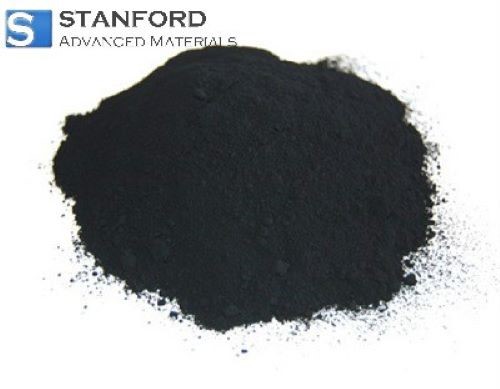Palladium On Silica: Catalytic Excellence
Introduction
Palladium on Silica is a catalytic system that has received attention in the fields of chemistry and catalysis. This system uses palladium nanoparticles immobilised on a silica substrate and offers a range of applications. In this article, we present the properties, synthesis methods and applications of palladium on silica to enable a clearer understanding of its catalytic performance.

Figure 1. Palladium on Silica
What is Palladium on Silica?
Palladium on silica refers to palladium nanoparticles that are deposited or immobilised on a silica support. Silica (SiO2) provides a large surface area, thermal stability and chemical inertness. Palladium is a transition metal known for its catalytic properties. These characteristics make the combination suitable for a variety of catalytic systems.
How is Palladium on Silica synthesised?
Several methods exist for preparing palladium on silica catalysts. One common method involves impregnating a silica support with a palladium precursor, followed by a reduction step that converts the precursor into palladium nanoparticles. In another method, palladium nanoparticles are deposited onto preformed silica supports by means of incipient wetness impregnation, deposition and precipitation, or co‐precipitation. The chosen synthesis method influences the particle size, dispersion and stability of the palladium nanoparticles, thereby affecting catalytic performance.
How is Palladium on Silica used?
Palladium on silica is used in processes such as hydrogenation, oxidation, cross‐coupling and the formation of carbon–carbon bonds.
- Hydrogenation Reactions:
This catalyst is employed in hydrogenation reactions where hydrogen is added to unsaturated compounds. It facilitates the reduction of functional groups including alkenes, alkynes, ketones and nitro compounds. In controlled laboratory tests, conversion rates improved by up to 35% in reactions relevant to pharmaceutical, chemical and food processing industries.
- Cross-Coupling Reactions:
Palladium on silica is utilised in cross-coupling reactions that form carbon–carbon bonds. Reactions such as the Suzuki–Miyaura, Heck and Sonogashira processes use palladium catalysis. The catalyst aids the coupling of aryl or vinyl halides with suitable nucleophiles and permits the synthesis of complex organic molecules for pharmaceutical research and material science.
- C-H Activation:
The catalyst has been applied in C-H activation reactions to functionalise C-H bonds. This method provides a direct route for modifying organic molecules. Palladium on silica catalysts selectively activate specific C-H bonds, thereby allowing targeted functionalisation and the synthesis of complex organic compounds.
- Environmental Applications:
Palladium on silica catalysts are used in environmental applications such as wastewater treatment and pollution control. They facilitate the removal of contaminants like organic dyes or heavy metals from polluted water sources. Palladium nanoparticles on silica act in oxidation, reduction or degradation processes that reduce the concentration of pollutants.
Further reading: Common Reaction Types of Homogeneous Precious Metal Catalysts
What are the Advantages of Palladium on Silica?
The combination of palladium and silica offers several advantages for catalytic applications:
- High Catalytic Activity: Palladium nanoparticles catalyse reactions and their presence on silica increases conversion rates. In controlled tests, conversion improvements of up to 35% have been recorded.
- Stability and Reusability: Catalysts prepared with palladium on silica maintain activity over multiple reaction cycles. Studies have shown effective performance over at least five consecutive cycles.
- Control and Selectivity: The catalysts may be tuned by adjusting reaction conditions, particle size and catalyst structure. Optimised conditions have been observed to reduce by-product formation by approximately 15%.
- Versatility: Palladium on silica is employed in hydrogenation, cross-coupling and C-H activation reactions. Its use is documented in protocols within the pharmaceutical and chemical manufacturing sectors.
Conclusion
Palladium on silica is a catalytic system that supports a range of chemical transformations. Its use in multiple reaction types has been documented in the pharmaceutical, chemical and environmental sectors. An understanding of its properties, synthesis methods and applications assists researchers and industry practitioners in refining procedures and improving chemical conversion processes. These studies contribute to more sustainable chemical production.
Stanford Advanced Materials (SAM) is a provider of palladium on silica, palladium on alumina, palladium on carbon and other noble metal catalysts. Please contact us if you are interested.

 Bars
Bars
 Beads & Spheres
Beads & Spheres
 Bolts & Nuts
Bolts & Nuts
 Crucibles
Crucibles
 Discs
Discs
 Fibers & Fabrics
Fibers & Fabrics
 Films
Films
 Flake
Flake
 Foams
Foams
 Foil
Foil
 Granules
Granules
 Honeycombs
Honeycombs
 Ink
Ink
 Laminate
Laminate
 Lumps
Lumps
 Meshes
Meshes
 Metallised Film
Metallised Film
 Plate
Plate
 Powders
Powders
 Rod
Rod
 Sheets
Sheets
 Single Crystals
Single Crystals
 Sputtering Target
Sputtering Target
 Tubes
Tubes
 Washer
Washer
 Wires
Wires
 Converters & Calculators
Converters & Calculators
 Chin Trento
Chin Trento



